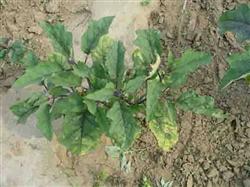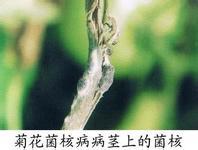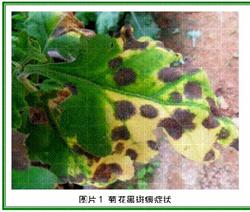Control methods of Verticillium wilt of chrysanthemum

First, damage symptoms: the occurrence of Verticillium wilt in chrysanthemum is common, the leaves of infected plants are yellow and weak, yellowing is limited to a few lower leaves at first, then increases gradually, and the old leaves turn brown and die. Flowers are small or cannot blossom. 2. Morphological characteristics of pathogens: the pathogen is VerticilliumdahliaeKleb. It belongs to half-known fungi. The mycelium is white, the conidiophores are erect, 110-130 microns long, 3-4 branches per round, the branch size is 13.7-21.4 × 2.3-9.1 (microns), the tip or apical branch of the whorl branch bears conidia, the conidia are ovoid, the unicellular cells are colorless, the size is 2.3-9.1X1.5-30 (microns), and the spore wall thickens to form dark brown chlamydospores. Many thick-walled cells combine to form subspherical microsclerotia, the size of which is 30 / 50 microns. Third, the characteristics of the disease: the bacteria survive in the soil or on the diseased body for many years and invade the vascular bundle tissue through the root. The damaged cuttings are also an important source of primary infection, and the hyphae grow in the soil through root contact. Conidia spread by wind and rain, and sometimes conidia can be seen growing on the damaged stem. There were differences in disease resistance among varieties. When the plant grows vigorously, the disease occurs slowly, and when the plant develops flower bud in the flowering stage, the disease spreads rapidly. Fourth, prevention and control methods: (1) when the soil breeding chrysanthemum seedlings is treated with heat treatment or chemical agents, 40% pentachloronitrobenzene powder 3.5-5g can be mixed with 0.1 cubic meters of fine soil to kill bacteria in the soil. (2) selecting disease-free cuttings from healthy plants and advocating the use of ABT rooting powder when cutting to make cuttings survive as soon as possible, shorten the time of cuttings in the soil, and reduce the incidence of disease. (3) see Fusarium wilt of chrysanthemum by other methods.
- Prev

Control methods of Sclerotinia sclerotiorum in Chrysanthemum
First, the symptoms of damage: waterlogged disease spots appeared in the middle and lower part of the stem at first, and then turned gray; under humid conditions, the disease part was soft rot, superficial white mildew layer, and in the later stage, the cortex of the diseased stem was moldy and fissured, and there were mouse dung-like black sclerotia in the endophy. sometimes sclerotia are also produced on the stem surface. Second, the morphological characteristics of pathogens: the pathogen is ascus.
- Next

Control techniques of black spot of chrysanthemum
First, the main symptoms: occur on the leaves, serious can spread to the petiole. The disease spot is gray-black spot in the early stage, surrounded by faded green halo; after expansion, the disease spot is nearly round to irregular, the inside is grayish brown, the edge is dark brown, and there are yellow spots around it; in the later stage, the center of the disease spot is yellow-brown, dry, in a humid environment.
Related
- Fuxing push coffee new agricultural production and marketing class: lack of small-scale processing plants
- Jujube rice field leisure farm deep ploughing Yilan for five years to create a space for organic food and play
- Nongyu Farm-A trial of organic papaya for brave women with advanced technology
- Four points for attention in the prevention and control of diseases and insect pests of edible fungi
- How to add nutrient solution to Edible Fungi
- Is there any good way to control edible fungus mites?
- Open Inoculation Technology of Edible Fungi
- Is there any clever way to use fertilizer for edible fungus in winter?
- What agents are used to kill the pathogens of edible fungi in the mushroom shed?
- Rapid drying of Edible Fungi

